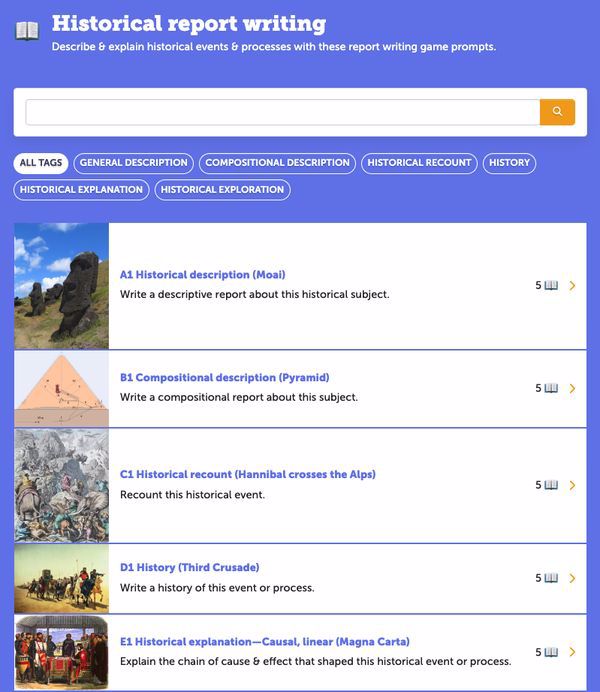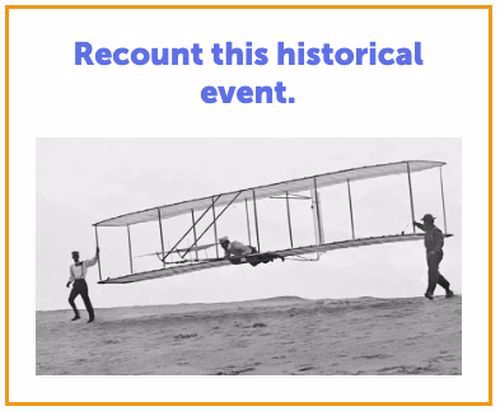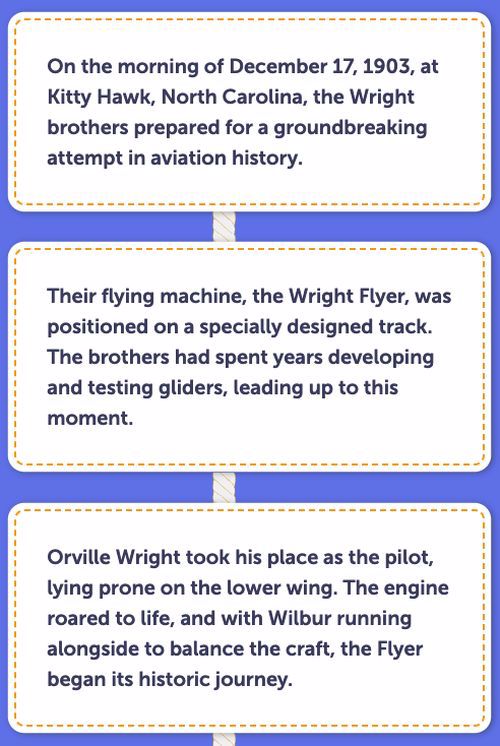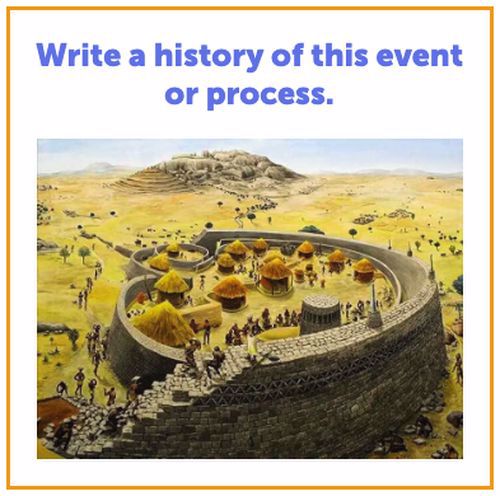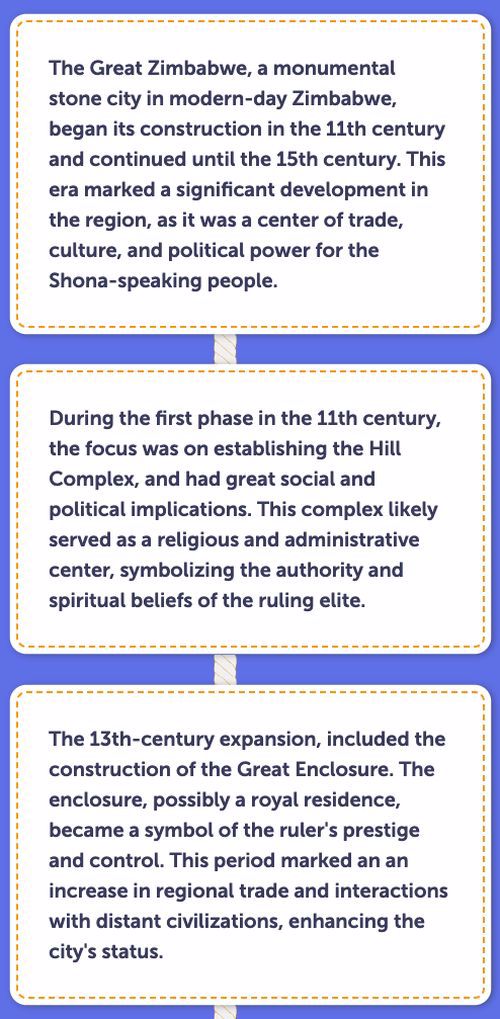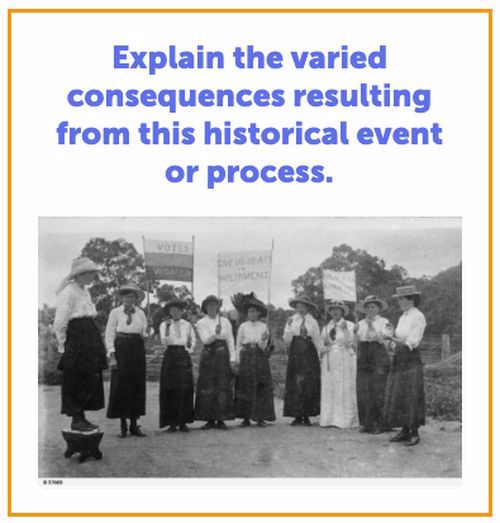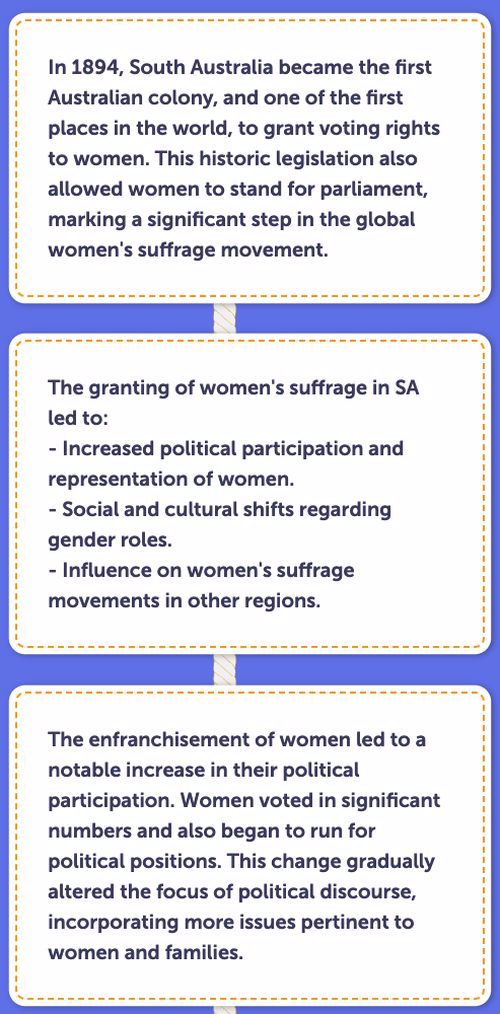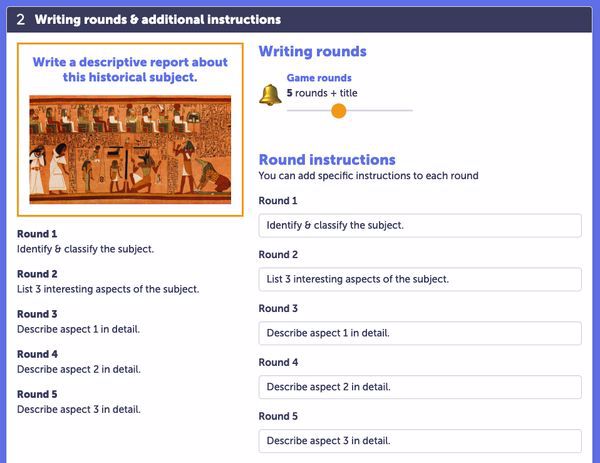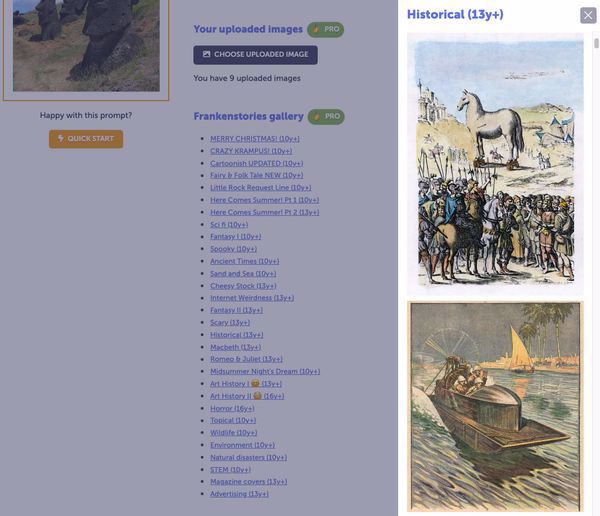A few weeks ago, we published a collection of preset prompts for scientific report writing.
This week we're publishing a similar set for historical report writing.
These prompts represent text-type variations common to history writing:
- General description (e.g. of a historical object)
- Compositional description (of an object or cultural practice)
- Historical recount (of a single event)
- Historical account (over a series of phases)
- Explanation (causal vs consequential & linear vs factorial)
- Exploration (providing alternative explanations)
What can you do with these prompts?
The release notes for this collection are almost identical to the notes for scientific reports, so I'll keep it brief:
- These prompts give students a framework within which to practice writing different types of history text.
- This breakdown of text types is based on Martin & Rose's genre analysis (summarised by PETAA in the Chronicling, Reporting, and Explaining sections of this table).
- The text types increase in complexity as they take more context into account (and become more abstract).
- Whether or not you find the labelling familiar, these are all authentic text types that appear "in the wild" in historical writing.
We don't yet have teacher notes for these prompts. However, each prompt has at least one demo game that should give you a sense of that particular text type.
Example 1: Historical recount
Historical recounts are similar to narrative writing in that they focus on individuals acting in specific circumstances. However, unlike fictional narratives, they place more emphasis on objective facts (dates, times, and data) and less emphasis on creating an emotional impact on the audience.
For example, this demo game recounts the first flight of the Wright Brothers at Kitty Hawk:
Example 2: Historical account
Historical accounts are also similar to narrative writing in the way they relate a series of events in chronological order. However, compared to historical recounts, histories are more "zoomed out", covering a greater sweep of time and focusing more on populations, trends, forces, or processes than individuals.
For example, this demo game provides a brief history of The Great Zimbabwe:
Example 3: Historical explanation (consequential & factorial)
Where a simple history relates events or processes in chronological order, a historical explanation is more analytical and tries to explain the causes and consequences of events.
For example, this demo game explains various consequences of women's suffrage in South Australia:
Customise the images (and prompts) to suit whatever you're teaching
We made variations of each text type to give you a sense of possibility, but as with all preset prompts, you can change them however you like, including uploading your own images or browsing our image library.

